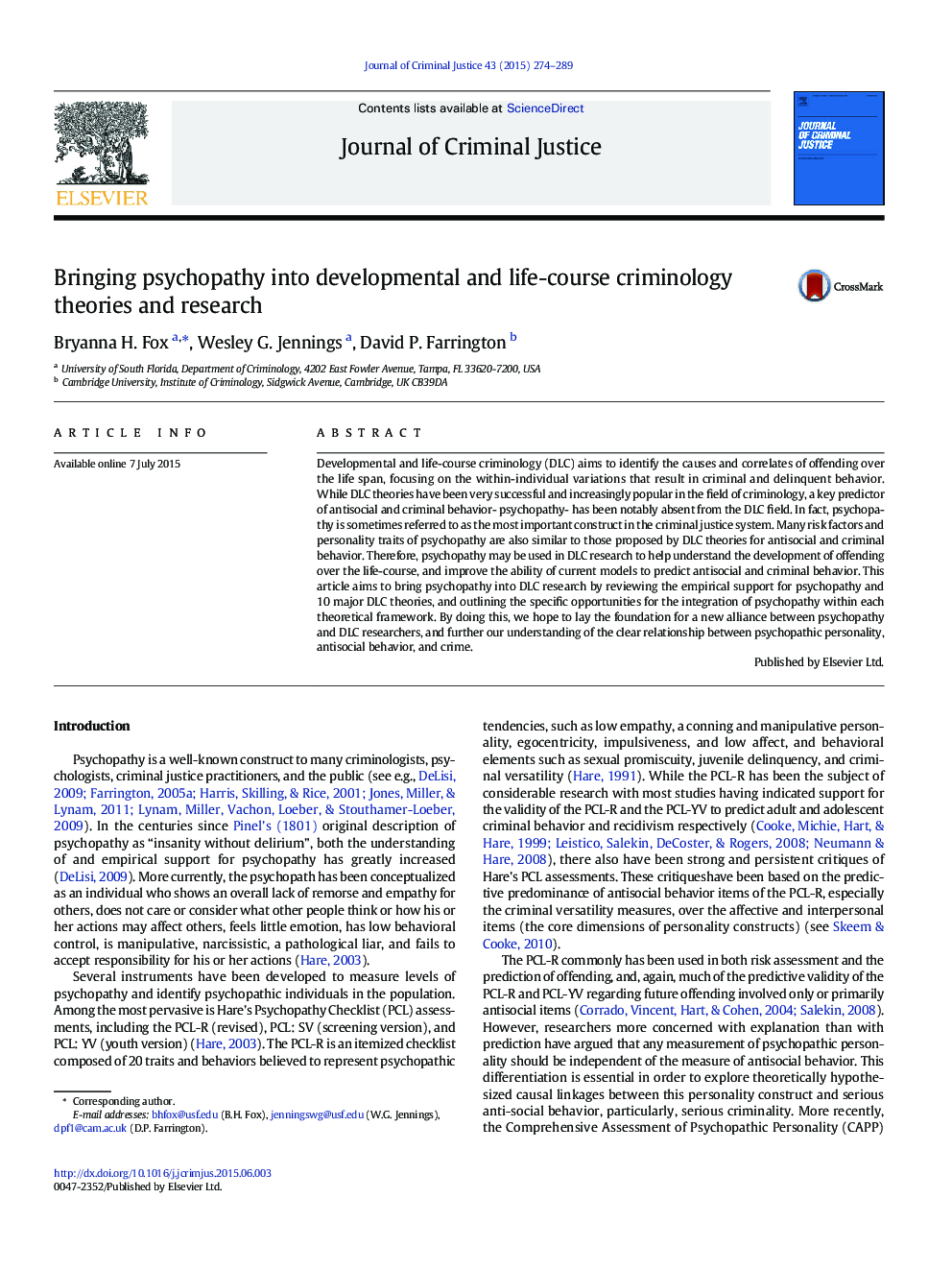| کد مقاله | کد نشریه | سال انتشار | مقاله انگلیسی | نسخه تمام متن |
|---|---|---|---|---|
| 882730 | 912017 | 2015 | 16 صفحه PDF | دانلود رایگان |
• A review of the empirical support for psychopathy and the 10 major DLC theories is conducted.
• How psychopathy contributes to the development of offending over the life-course is described.
• Specific opportunities to integrate psychopathy in each DLC theoretical framework are identified.
Developmental and life-course criminology (DLC) aims to identify the causes and correlates of offending over the life span, focusing on the within-individual variations that result in criminal and delinquent behavior. While DLC theories have been very successful and increasingly popular in the field of criminology, a key predictor of antisocial and criminal behavior- psychopathy- has been notably absent from the DLC field. In fact, psychopathy is sometimes referred to as the most important construct in the criminal justice system. Many risk factors and personality traits of psychopathy are also similar to those proposed by DLC theories for antisocial and criminal behavior. Therefore, psychopathy may be used in DLC research to help understand the development of offending over the life-course, and improve the ability of current models to predict antisocial and criminal behavior. This article aims to bring psychopathy into DLC research by reviewing the empirical support for psychopathy and 10 major DLC theories, and outlining the specific opportunities for the integration of psychopathy within each theoretical framework. By doing this, we hope to lay the foundation for a new alliance between psychopathy and DLC researchers, and further our understanding of the clear relationship between psychopathic personality, antisocial behavior, and crime.
Journal: Journal of Criminal Justice - Volume 43, Issue 4, July–August 2015, Pages 274–289
